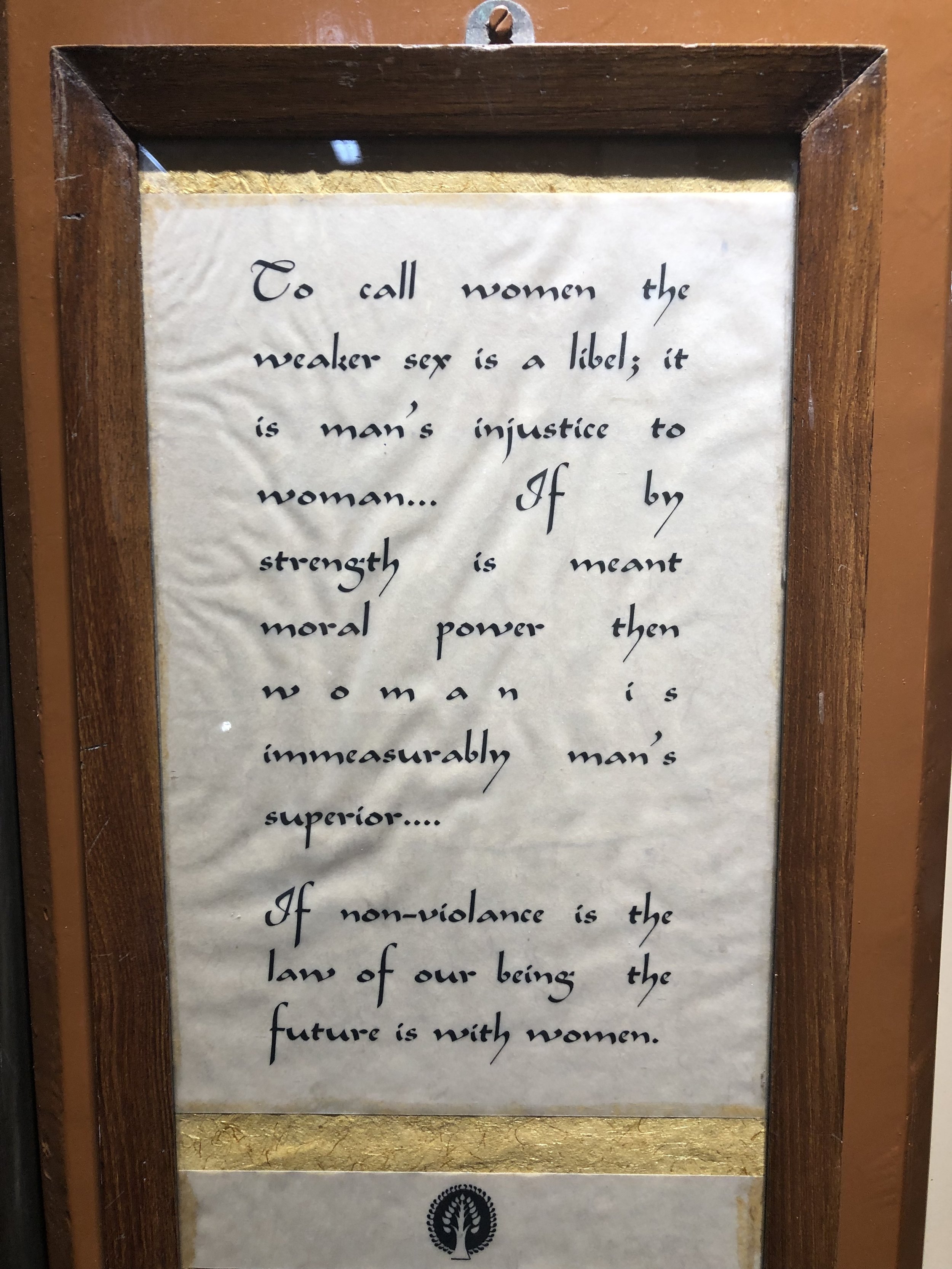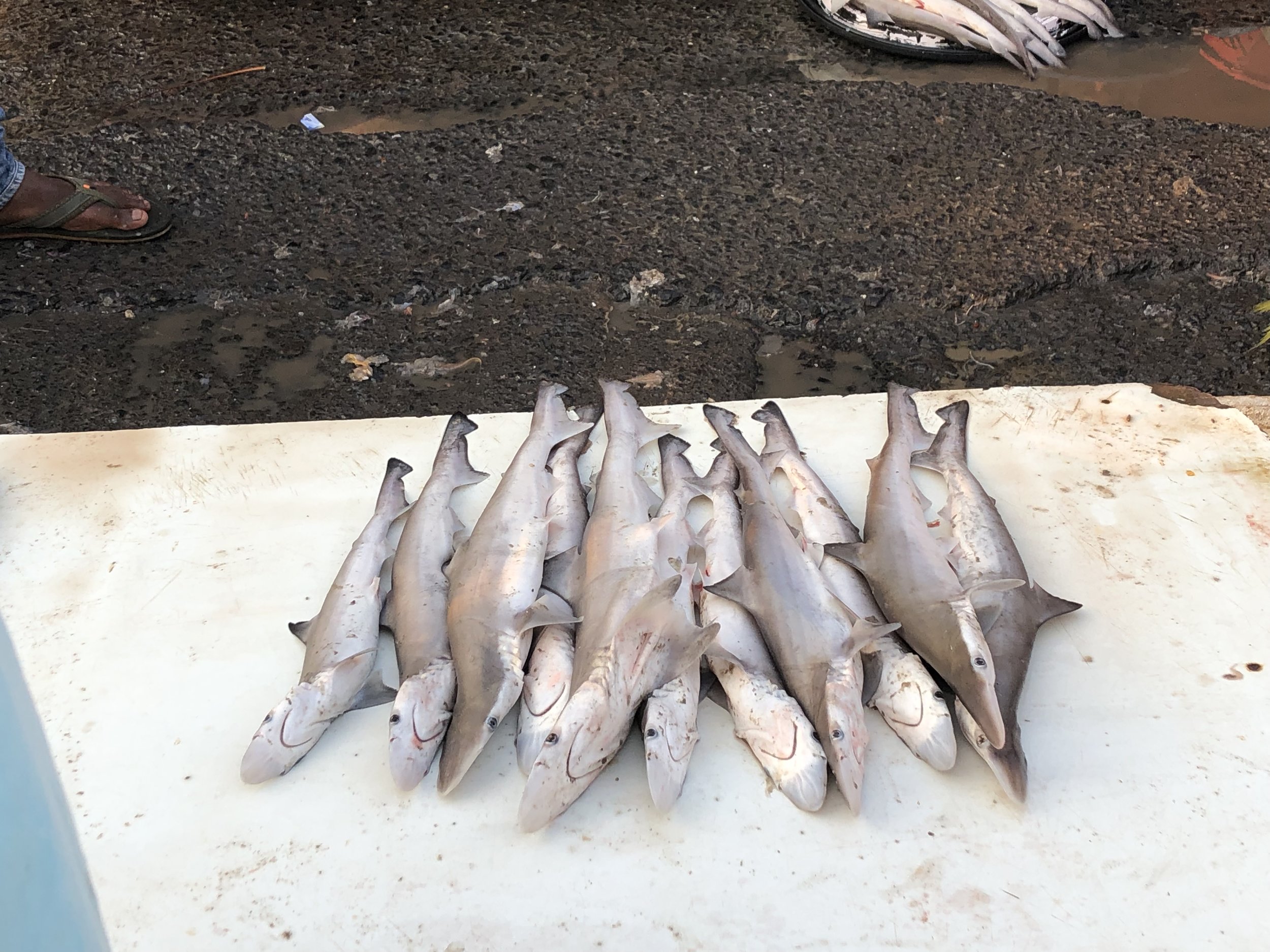Jewish life and Shabbat in India
Friday and Shabbat came at a much needed point in the program. Yes this is a trip and vacation but we are not relaxing. While my peers were quickly discovering and envying my ability to fall asleep within minutes of getting on transportation, I was still tired. The days are early and long yet fulfilling.
Tuesday
Earlier in the week, we visited and had dinner at the Evelyn Peters JCC in Mumbai. This community center is unlike an American JCC in terms of space. It is a room of maybe 40 ft x 130 feet in size with compactable dividers. It is part of an office building, and the administrative offices share a space with the social hall. Despite this size, it is a true JCC. You walk in and are greeted with flyers promoting different events, trips and ways to get involved. There are pictures of community members on the bulletin boards. I took a peek and found Maayan in several.
Maayan is a member of the Bene-Israel Jewish community in Mumbai, actively involved in the JCC and JDC, the JYP, the Jewish youth pioneers. She joins many JDC trips to provide perspective on the community. She was with us the whole trip, and funny enough, Hanna is her aunt! She and I are about the same age and both have braces. Safe to say we quickly connected. “I’ve staffed many JDC trips,” she told me, “and no one has braces. I get them and now there is someone with them too.” I smiled.
We learned about the founding of the JCC, their involvement in March of the Living, the activities hosted by the JYP, and types of Tikkun Olam events, to make a few. They also partner with GPM when appropriate, and have six Sunday Fun-days a year where they take children out of the slums for a day of activities.
Following dinner we learned basic Bollywood dancing. It helped work off the food coma. The dance we learned was easier to break into eight counts than the tribal dance. A simple 30 second routine left us all feeling accomplished.
Friday
Friday morning we were able to sleep in until about 7:30 before heading to the Gandhi museum. The ground floor is heavy with books. They’re organized by topic and are delightfully worn. When you walk in, you’re met down the hall with a large statue of his face, and columns all over the house are adorned with his quotes in both English and Hindi.
I didn’t know much about Gandhi. I knew he was in favor of peaceful protest and often fasted to express dissent. I asked our guide, Hanna, how he survived his multiple day fasts and she shared that Hindu fasts differ from Jewish fasts. On a Hindu fast, there are a few things you can still eat, you’re just not getting your full nutrients. You can consume specific types of bread and juices. However, on a Jewish fast, nothing shall pass through the mouth.
The second floor has a diagrama of his life including his marriage, his law studies at Oxford, his time in South Africa and getting thrown off a train there, that last of which spurred his activism. Gandhi came from money which is interesting considering he was an incredibly humble and plainly dressed figure.
The main piece of history that my group was attracted to was the letter he wrote to Hitler during WWII. Even with everything going on, Gandhi continued to address the letter as “Dear Friend.” Friend?? It’s surprising. Angering. Understanding. Um, what? But that was Gandhi.
We departed the house and made our way to Om Creations. It’s a beautiful little haven from the honking and dust of Mumbai.
Om Creations “is a non-profit training project for holistic and educational rehabilitation of mentally challenged women from age 20 onward.” Many of the women come to Om Creations on more than ten pills and medications, some even received shock therapy, and through this project, 99% are successfully off their medications. These women make products for sale and receive a stipend, helping them become financially empowered and contributors to their household.
We had lunch with the women, and talking with a few of them was challenging. Some were more verbal than others, and the language barrier added another layer of challenge. Miranda and I sat next to one woman and we struggled to move past basic yes/no questions. Are you from Mumbai? Do you have brothers or sisters? This lunch was quiet compared to others, but it was still enjoyable.
Most of the group bought items the women had made, and a few of us got more henna.
We went back to the hotel to freshen up before dinner. It was time to relax a little. I was very excited for Shabbat! It would be a new Shabbat experience for me with Sephardic and Indian traditions.
Before Shabbat started, we had a breakout session for the trip. In it, we discussed the week and learned more about Indian Shabbat traditions. Maayan told us about a Sephardic version of cholent, which is a stew that slow cooks for hours, without the need to cook on Shabbat. She explained they cook semolina with coconut milk and sugar for the morning, and also make a Sephardic Indian wine. They make the wine by “soaking dried black grapes and then boiling it.” It’s nonalcoholic but works for Kiddush.
We had Kabbalat Shabbat and dinner at Keneseth Eliyahoo Synagogue with some of their community members. The synagogue recently completed a renovation/restoration and it is beautiful! The walls are a lively blue and the interior is well lit. There are plaques along the walls commemorating donors and memorable events. It is bright and welcoming. This service was different for me, because for the first time I sat upstairs in the ladies balcony.
I grew up in an Ashkenazi Jewish household (my background is from Eastern Europe) and sat on the main synagogue level with men around me, yet this isn’t the case for traditional Sephardic practice. Sephardic Jews are from Spain, Portugal, North Africa and the Middle East. Traditional belief asks: how are you supposed to focus on your relationship with God (often written as G-d as well) if you’re distracted by the opposite gender?
I was still able to sit with female friends upstairs. The siddur was 100% in Hebrew. No English transliteration, or even Hindi transliteration. The only English I could find was a sticker on the inside cover stating the book came from a Jewish retailer in Brooklyn.
I struggled to follow along. I would peer over the balcony to see if a man had the same siddur version as me and if the paragraph structure on my page matched his. Nope. No idea. I finally found my way when they started singing L’cha Dodi. This signifies the beginning of the Kabbalat Shabbat service. Those words I can find and read. Boom, we have a winner! I proudly turned to Sarah next to me to share the news with her.
The service ended and we were joined by the men in the dining area. We said blessings over wine and challah, some of the best challah I’ve ever had, and washed our hands. Though this isn’t usually my tradition, I wanted to participate.
Maayan had warned me there’s a lot of food and to take a little of everything. She was right, so much food. I kind of expected to lose weight this trip, not knowing how much I’d like or spice I’d be able to tolerate. It was delicious. We had multiple kinds of chicken and lamb and rice and veggies and a lot of bread. I don’t even remember all that I ate or what any of it was. We also drank whisky because Shabbat is a festive occasion, so let’s party!
We ended dinner with fruit for dessert and singing.
Another piece we learned in our breakout session is the Hindi version of Kol Ha Olam Kulo. We sang it in Hebrew, English and then Hindi.
At dinner, when it was our table’s turn to choose a song to sing, we picked this one. Andrea luckily brought the papers with her and hurriedly passed them out. Singing it in Hindi was both proud and embarrassing. I felt like a child showing off what I had learned in school that day without nailing it down fully. It was a joyous occasion nonetheless and I’ll forever remember it.
Our evening concluded with a stroll back to the hotel. Shabbat shalom.
Saturday
We had a free morning Saturday to catch up on sleep, sit by the pool, or walk around Mumbai. I used this time to go to the Sassoon dock and walk the fish/seafood market. Andrea went before we all arrived and shared it was worth seeing.
She, Lisa and I walked the 20 or so minutes it took to get to the dock, and were ambushed by people and traffic inside rather than a smell of seafood. I think that because everything was so fresh it smelled like a murky body of water more than fish.
We saw all kinds of seafood for sale. Multiple kinds and sizes of fish, shark, mollusks, crabs, sting ray, eel, shrimp, and I’m sure I’m forgetting a few.
You had to be really careful where you walked. You didn’t want to step in fish water or off the dock, or on someone or on a fish. The view though beautiful. Waking up early wasn’t ideal but I made myself do it. I didn’t know when I’d be back.
We walked back for breakfast and I finally had time to shop at FabIndia! I picked up two new outfits among other things, and later happily wore one for the night. Lisa, Miranda and I went on the adventure, and we had fun trying on the same outfits.
Lunch was at the Chabad house. Due to the different pronunciations and languages, the Indians say Chabad with a “K” sound, so “Kabad.”
So much food again! More deliciousness! It was three courses with beautiful blends of Jewish, Israeli and Indian flavors. More salads than I can count, fish dishes and veggies, and fruit. There was whisky again! Our lunch was about three hours, more than we planned, and we worked it off on a walking tour of Mumbai with Hanna.
We ended the day with Havdallah, and Andrea asked me on Friday if I’d like to write something. Havdallah signifies the end of Shabbat and the start of the new week. Here’s what I shared:
When Andrea asked me to participate in Shabbat on Friday, I instead asked if I could participate in Havdallah. Havdallah is really special to me because I don’t do it at home, and I don’t to it by myself. I think Havdallah is beautiful and more powerful in a group. It’s a full community reset before the new week. A wholesome ending, new beginnings.
As we conclude our first Shabbat together and are nearing the end of our trip, I want us to focus on beginnings. Beginning of special bonds. Beginnings of innovative development and creative thoughts. A new beginning to the week.
I want you to start thinking about some things you want to take back with you and begin doing back home.
With all beginnings, there’s an end. And our beautiful Shabbat together has been that. Beautiful.
We ate dinner at a Burmese restaurant, Burma Burma. It was delicious and abundant in dishes. Are you sensing a theme on this trip? Here is some of what we ate:
We celebrated our last night with Maayan, and all went for drinks at an Irish pub. Hanna, her husband Joshua and her daughter Keren also joined us that evening. It was a family affair!
Sunday would be our final day together and we’d spend it at the Elephanta Caves.






















